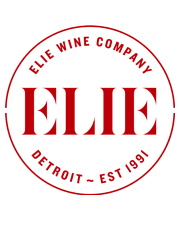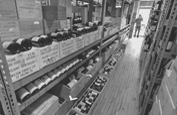Out with the Old: Vintage 2014 ‘Village’ Wines from Burgundy’s Côte-de-Nuits Communes Have Matured into Perfection, Modest Prices
We’ve survived another challenging year, and many of us will gather in smaller groups to ring in 2022. Our selection of 2014 wines represent more than ideal dinner companions – they are the mature culmination of the winemakers’ dream. In Burgundy, 2021 was also difficult, with frost in April and the coldest July in fifty years, but like most of us, domains and négociants are by now familiar with such hazards; according to Frédèric Drouhin, President of the Bourgogne Wine Board, “With the 2021 vintage we are back to a classic style with a lovely expression of fruitiness, balance, freshness, and lower level of alcohol.”
May your new year be as filled with superlatives.
Age before beauty? Not when you can have both. All wines age, but some do it more gracefully than others. When wine is young, it expresses bold, primary flavors, largely fresh fruit and bright flowers. Secondary notes may come from a vigneron’s technique; oak barrels taste of vanilla and malolactic fermentation often strikes the senses as buttery. With proper aging, these flavors begin to settle back to reveal a wine’s tertiary notes, the sign of maturity. These might include honey, dried fruit and rustic, earth-notes like truffles, leather and minerals. There is also a change in the wine’s mouthfeel; white wines may seem more viscous, and reds lose their tannins as these compounds fall out as sediment—another reason for decanting.
For every wine, there is an optimum period in which to experience it, a time when these tertiary flavors have peaked, but while enough fruit remains so that a nuance of freshness enlivens them. After that, a slow decline begins. Wines past their prime may still be delicious, but it’s a little like arriving late for a concert: The music you miss may be the very music you came to hear.
We believe that this selection of ‘Village’ wines from the 2014 vintage have arrived at their destination and represent the apex in this particular vintage. Although they will continue to evolve and change in years to come, ‘perfection’ is a word without qualifiers, and it is our contention that the maturation process in this particular selection has raised a flag on its summit.
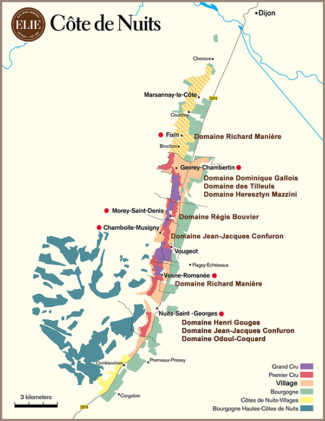
Decanting and Aeration
Once opened, wine immediately begins a dynamic process of oxidation, encouraged when you swirl the wine in your glass. (Have you ever had a host top off your glass and wonder if the refill came from the original bottle?) Aeration smooths harsh tannins while swirling dissipates the undesirable volatiles that may have developed inside the bottle as acid and alcohol intermix; the warmth from the room and your hands concentrates the aromatics. For most well-produced wines, a period of ‘acclamation’ is necessary for a freshly uncorked wine to reveal its full potential, and with older wines—those that have been cellared for a number of years—this is especially true. Decanting is aeration on a large scale, where the wine is poured into a second vessel, preferably one with a broad bottom to give the wine more surface exposure to oxygen. Since winery labels and bottle design are part of experience, it’s recommended that the wine be returned to its place of origin before serving.
These wines are best served at cellar temperature, 60 – 64 degrees Fahrenheit.
A Word on the 2014 Vintage
Top estates frequently produce outstanding wines in challenging vintages, and generally for two reasons: A lower per-acre yield produced in difficult years tend to concentrate flavors in the remaining grapes, and in judicious hand—those who invest in intensive sorting—less wine may be bottled, but it comes for the best of the crop. In Burgundy, June 28, 2014, is remembered as the day a ferocious hailstorm decimated vines throughout the Côte d’Or; many growers saw their yields halved over the course of a single hour. The Côte de Beaune took the brunt of the storm, with villages like Volnay, Pommard, Meursault and Beaune being hardest hit. The summer that followed was wet and chilly with a few hot days in July and a miserable August; Pierre Damoy of Gevrey-Chambertin, said, “Given that this was supposed to be an early vintage, the awful weather in August slowed everything down and caused us great anxiety.”
Côte de Nuits was spared much of the hail, but the weather conditions affected the whole of the Côte d’Or. Some late-season rot appeared in the Pinot Noir harvest, but it was dealt with effectively in the vineyard or on the sorting tables. As a result, the best sites delivered excellent wines of minerality, fruit intensity and staying power, and according to Thierry Brouin of Clos des Lambrays in Morey-St-Denis, “2014 turned out to be an excellent vintage, frequently overlooked in the shadow of the phenomenal crop the following year.”
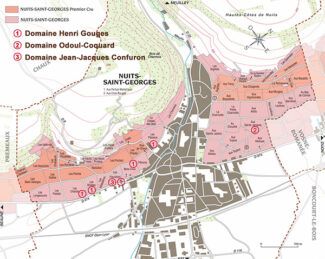
Nuits-Saint-Georges: Muscular & Chewy
Nuits-Saint-Georges—the town in eastern Burgundy from which the Côte de Nuits draws its name, sprawls across 800 acres of Village and Premier Cru vineyards. Production here is almost exclusively red, with 97% of the vineyards planted to Pinot Noir. Of these, there are 41 Premier Cru climats and wines made conforming to the strictest of the Nuits-Saint-Georges appellation rules, may claim the title Nuits-Saint-Georges Premier Cru. The soils in the northern half are made up of pebbly alluvium washed down from slopes, or, where the land is low, silty deposits from the river Meuzin. In the south, the alluvia at the base of the slopes originates in the combe of Vallerots where there are deep marly-limestone soils, while at the top of the slope, the rock is almost at the surface. Vineyard exposures are mostly to the East or South-East.
1. Nuits-Saint-Georges 2014, Domaine Henri Gouges ($95)
 Considered by many to be Nuits-Saint-Georges’ top domain, the estate has been passed down through many generations and is, to this day, a family affair, with four Gouges at the helm. Grégory Gouges has been the domain’s winemaker since 2003; Pierre today runs the business end with his cousin Christian, son Grégory, and Grégory’s cousin Antoine. The vineyards cover 36 acres, including seven of the best well-positioned Premiers in addition to the appellation’s most famous vineyards, Les Vaucrains and Les Saint Georges. The ‘Village’ cuvée is produced from the five lieux-dits of Plateaux, Belles Croix, Fleurières, Brûlées, and Chaliots, for a surface area of 5 acres, all located in the southern part of Nuits-Saint-Georges, and at the start of the hillside, on deep soils, with a mixture of clay, alluvium and limestone gravel.
Considered by many to be Nuits-Saint-Georges’ top domain, the estate has been passed down through many generations and is, to this day, a family affair, with four Gouges at the helm. Grégory Gouges has been the domain’s winemaker since 2003; Pierre today runs the business end with his cousin Christian, son Grégory, and Grégory’s cousin Antoine. The vineyards cover 36 acres, including seven of the best well-positioned Premiers in addition to the appellation’s most famous vineyards, Les Vaucrains and Les Saint Georges. The ‘Village’ cuvée is produced from the five lieux-dits of Plateaux, Belles Croix, Fleurières, Brûlées, and Chaliots, for a surface area of 5 acres, all located in the southern part of Nuits-Saint-Georges, and at the start of the hillside, on deep soils, with a mixture of clay, alluvium and limestone gravel.
2. Nuits-Saint-Georges ‘Aux Saints Jacques’ 2014, Domaine Odoul-Coquard ($65)
 Odoul cut his winemaking teeth at Domaine Dujac, Mommessin, and Domaine Denis Mortet. In 2004, he returned to the family domain to join his parents, Sylvette and Thierry, and as of 2009, he took over the estate as vigneron. In all, the family farms 25 acres in 21 different appellations throughout the Côte de Nuits; most notably, they own the majority of the lieu-dit vineyard of Les Crais Gillon in Morey-Saint-Denis. All of their farming is done with ‘lutte raisonée’, a sustainable viticulture practice.
Odoul cut his winemaking teeth at Domaine Dujac, Mommessin, and Domaine Denis Mortet. In 2004, he returned to the family domain to join his parents, Sylvette and Thierry, and as of 2009, he took over the estate as vigneron. In all, the family farms 25 acres in 21 different appellations throughout the Côte de Nuits; most notably, they own the majority of the lieu-dit vineyard of Les Crais Gillon in Morey-Saint-Denis. All of their farming is done with ‘lutte raisonée’, a sustainable viticulture practice.
3. Nuits-Saint-Georges ‘Les Fleurières’ 2014, Domaine Jean-Jacques Confuron ($70)
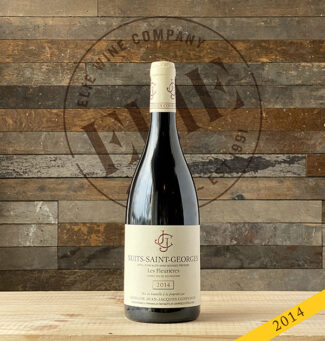 The 20 acres that make up Domaine Jean-Jacques Confuron are now controlled by Sophie Meunier-Confuron and her husband Alain Meunier, who converted all parcels to organic viticulture in 1990. This includes excellent parcels of Premier Cru and Village vines in Vosne-Romanée, Chambolle-Musigny and Nuits-Saint-Georges as well as two great Grands Crus, Romanée Saint-Vivant and Clos-Vougeot. The Confurons vinify according to the Burgundian mantra of ‘power without weight’, seeking a depth of flavor balanced by refinement and elegance. ‘Les Fleurières’ is a lieu-dit situated on clay-limestone soils that are ideally suited to Pinot Noir.
The 20 acres that make up Domaine Jean-Jacques Confuron are now controlled by Sophie Meunier-Confuron and her husband Alain Meunier, who converted all parcels to organic viticulture in 1990. This includes excellent parcels of Premier Cru and Village vines in Vosne-Romanée, Chambolle-Musigny and Nuits-Saint-Georges as well as two great Grands Crus, Romanée Saint-Vivant and Clos-Vougeot. The Confurons vinify according to the Burgundian mantra of ‘power without weight’, seeking a depth of flavor balanced by refinement and elegance. ‘Les Fleurières’ is a lieu-dit situated on clay-limestone soils that are ideally suited to Pinot Noir.
4. Chambolle-Musigny 2014, Domaine Jean-Jacques Confuron ($89)
 Another gem from Sophie Meunier-Confuron and her husband Alain Meunier and their organic viticulture. True to Chambolle-Musigny’s reputation, the wine is refined and perfumed with the iconic aromatics that has earned Chambolle-Musigny a reputation as the ‘Volnay’ of the Côte de Nuits. Confuron’s plot in Chambolle-Musigny contains 80-year-old vines, the oldest in the domain, and Alain has consistently ploughed it by horse since 2003.
Another gem from Sophie Meunier-Confuron and her husband Alain Meunier and their organic viticulture. True to Chambolle-Musigny’s reputation, the wine is refined and perfumed with the iconic aromatics that has earned Chambolle-Musigny a reputation as the ‘Volnay’ of the Côte de Nuits. Confuron’s plot in Chambolle-Musigny contains 80-year-old vines, the oldest in the domain, and Alain has consistently ploughed it by horse since 2003.

Gevrey-Chambertin: Gamey & Velvety
The Premiers Crus of Gevrey-Chambertin, including the twin crown jewels of Chambertin and Clos de Bèze, are found beyond the entrance to the hollowed hill of Lavaux; they occupy the upper portion of the Côte at elevations between one thousand and 1200 feet, where the shallow soils are largely composed of shall brown limestone. Below them are the Villages-designated sites, where the vines are grown in brown calcic or limey soils enrichened by the red silt that washes down from the plateau. There is no shortage of quotes about this superlative appellation, summarized by Grégory Patriat, winemaker for Jean-Claude Boisset: “To me, Gevrey-Chambertin is the most interesting appellation in Burgundy. It can reflect finesse while maintaining its strength, and it is here, more than anywhere else, that Pinot Noir reaches its greatest aging potential.”
5. Gevrey-Chambertin 2014, Domaine Dominique Gallois ($75)
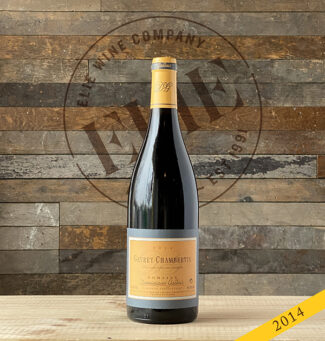 The soft-spoken Dominique Gallois has been producing wonderful wines from a scant ten acres since 1989. About half is represented by Gevrey-Chambertin Village, ten parcels situated around the village of Gevrey-Chambertin itself. The climats of En Songe, En Jouise, En Billard, En Dérée, Croix des Champs, Sylvie, La Justice, Charreux produce the cuvée, where average vine age is fifty years. Annual production is around 10,000 bottles.
The soft-spoken Dominique Gallois has been producing wonderful wines from a scant ten acres since 1989. About half is represented by Gevrey-Chambertin Village, ten parcels situated around the village of Gevrey-Chambertin itself. The climats of En Songe, En Jouise, En Billard, En Dérée, Croix des Champs, Sylvie, La Justice, Charreux produce the cuvée, where average vine age is fifty years. Annual production is around 10,000 bottles.
6. Gevrey-Chambertin ‘Les Évocelles’ 2014, Domaine des Tilleuls (Philippe Livera) ($65)
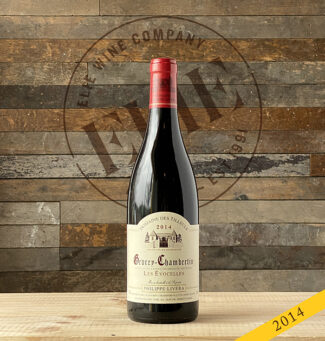 In 2005, at the age of 24, Damien Livera took over the des Tilleuls estate from his father Philippe and immediately upgraded the winery and renovated the vineyards. He credits advice from Arnaud Mortet, a local legend, in reducing his use of new wood during élevage and lessening the level of extraction. ‘Les Évocelles’ is a 25-acre Village-level lieu-dit in the northeast area of Gevrey-Chambertin, bordering the Premiers Crus of Champeaux to the north and Les Goulots to the south.
In 2005, at the age of 24, Damien Livera took over the des Tilleuls estate from his father Philippe and immediately upgraded the winery and renovated the vineyards. He credits advice from Arnaud Mortet, a local legend, in reducing his use of new wood during élevage and lessening the level of extraction. ‘Les Évocelles’ is a 25-acre Village-level lieu-dit in the northeast area of Gevrey-Chambertin, bordering the Premiers Crus of Champeaux to the north and Les Goulots to the south.
7. Gevrey-Chambertin ‘Clos Village’ 2014, Domaine des Tilleuls (Philippe Livera) ($65)
 ‘Clos Village’ is a walled vineyard located just outside the Livera family’s cellars. Vines were planted in the early 1960s, and the plot sits directly downslope from the village’s top Premier Cru vineyards where soils combine brown limestone and marl. The grapes are hand-harvested, destemmed and fermented on indigenous yeasts; 60% is aged in older French oak barrels, with approximately 40% seeing new wood. The wine is always bottled unfined and unfiltered.
‘Clos Village’ is a walled vineyard located just outside the Livera family’s cellars. Vines were planted in the early 1960s, and the plot sits directly downslope from the village’s top Premier Cru vineyards where soils combine brown limestone and marl. The grapes are hand-harvested, destemmed and fermented on indigenous yeasts; 60% is aged in older French oak barrels, with approximately 40% seeing new wood. The wine is always bottled unfined and unfiltered.
8. Gevrey-Chambertin ‘Les Songes’ 2014, Domaine Heresztyn-Mazzini ‘Vieilles Vignes’ ($85)
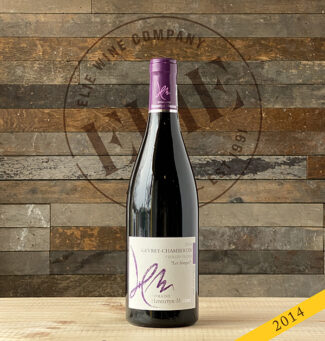 Florence and Simon Heresztyn-Mazzini hail from different winemaking regions—Florence from Burgundy and Simon from Champagne. After ten years of working Heresztyn-owned vineyards in Gevrey-Chambertin, the couple decided to start their own venture on 14 acres spread across the villages of Gevrey-Chambertin, Morey-Saint-Denis, and Chambolle-Musigny. 2012 was their first vintage. ‘Les Songes’ lieu-dit is just under an acre of old vines planted in 1926 and 1952 and grown in clay-limestone with marl rich in fossilized shells. Annual production is around 2,000 bottles.
Florence and Simon Heresztyn-Mazzini hail from different winemaking regions—Florence from Burgundy and Simon from Champagne. After ten years of working Heresztyn-owned vineyards in Gevrey-Chambertin, the couple decided to start their own venture on 14 acres spread across the villages of Gevrey-Chambertin, Morey-Saint-Denis, and Chambolle-Musigny. 2012 was their first vintage. ‘Les Songes’ lieu-dit is just under an acre of old vines planted in 1926 and 1952 and grown in clay-limestone with marl rich in fossilized shells. Annual production is around 2,000 bottles.
9. Gevrey Chambertin 2014, Domaine Heresztyn-Mazzini ‘Vieilles Vignes’ ($75)
 Using grapes taken exclusively from vines planted in 1950 and 1995 in 5 acrs of Lieux-dits Billard, Es Murots, La Platière, and Puits de la Barraque, team Heresztyn-Mazzini relies on 35% whole bunch with wild yeast fermentation, then pre-ferments using cold macerations. Punch downs take place three to four times a day, and the wine is aged in 30% new wood oak barrels for 16-18 months, then bottled at the estate without fining or filtering. Annual production is around 6,000 bottles.
Using grapes taken exclusively from vines planted in 1950 and 1995 in 5 acrs of Lieux-dits Billard, Es Murots, La Platière, and Puits de la Barraque, team Heresztyn-Mazzini relies on 35% whole bunch with wild yeast fermentation, then pre-ferments using cold macerations. Punch downs take place three to four times a day, and the wine is aged in 30% new wood oak barrels for 16-18 months, then bottled at the estate without fining or filtering. Annual production is around 6,000 bottles.
10. Morey-Saint-Denis ‘En la Rue de Vergy’ 2014, Domaine Régis Bouvier ($65)
 Rich in Premiers Crus, Morey-Saint-Denis also encompasses five Grands Crus (Clos de Tart, Bonnes Mares, Clos de la Roche, Clos Saint-Denis, Clos des Lambrays). It forms a bridge between the powerful, but velvet-smooth wines of Gevrey-Chambertin and Chambolle-Musigny which is often referred to as the most ‘feminine’ wine of the Côte de Nuits. Régis Bouvier, known for reasonable yields from high quality terroirs, produces white, red and some of the best rosé in Burgundy. ‘En la Rue de Vergy’ is an acre-and-a-half lieu-dit above Les Bonnes Mares, where there is—remarkably—no soil; the vines are planted directly in the limestone bedrock. This forces the roots to find crevices between the stones and the rock strata to plunge deeply in search of water and nutrients.
Rich in Premiers Crus, Morey-Saint-Denis also encompasses five Grands Crus (Clos de Tart, Bonnes Mares, Clos de la Roche, Clos Saint-Denis, Clos des Lambrays). It forms a bridge between the powerful, but velvet-smooth wines of Gevrey-Chambertin and Chambolle-Musigny which is often referred to as the most ‘feminine’ wine of the Côte de Nuits. Régis Bouvier, known for reasonable yields from high quality terroirs, produces white, red and some of the best rosé in Burgundy. ‘En la Rue de Vergy’ is an acre-and-a-half lieu-dit above Les Bonnes Mares, where there is—remarkably—no soil; the vines are planted directly in the limestone bedrock. This forces the roots to find crevices between the stones and the rock strata to plunge deeply in search of water and nutrients.

11. Fixin 2014, Domaine Richard Manière ($60)
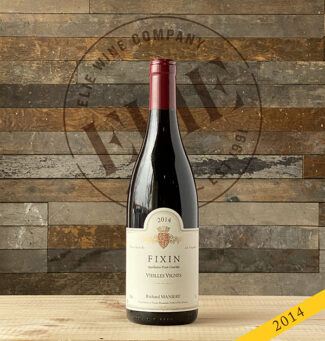 Fixin occupies the region between Dijon and Gevrey-Chambertin, and (as in much of Burgundy), the Premier Cru plots are on reasonably homogenous brown limestone soils with east to south-east exposures. Village plots are on lower ground at the foot of the slopes where the soil is a mixture of limestone and marl. With a home base in the village of Vosne-Romanée, Domaine Richard Manière works 20 acres in plots sprinkled throughout Fixin, Echézeaux and Vosne-Romanée.
Fixin occupies the region between Dijon and Gevrey-Chambertin, and (as in much of Burgundy), the Premier Cru plots are on reasonably homogenous brown limestone soils with east to south-east exposures. Village plots are on lower ground at the foot of the slopes where the soil is a mixture of limestone and marl. With a home base in the village of Vosne-Romanée, Domaine Richard Manière works 20 acres in plots sprinkled throughout Fixin, Echézeaux and Vosne-Romanée.
12. Vosne-Romanée 2014, Domaine Richard Manière ($85)
 Burgundian author Gaston Roupnel claimed that in Vosne-Romanée, “all the charms of Bourgogne come together.” The finest vineyards are clustered together immediately north of the town of Vosne-Romanée and in top vintages have the perfect balance of weight, structure, elegance and longevity.
Burgundian author Gaston Roupnel claimed that in Vosne-Romanée, “all the charms of Bourgogne come together.” The finest vineyards are clustered together immediately north of the town of Vosne-Romanée and in top vintages have the perfect balance of weight, structure, elegance and longevity.
El Dorado in White from Spain’s Rueda

Rueda 2014, Belondrade y Lurton ($58)
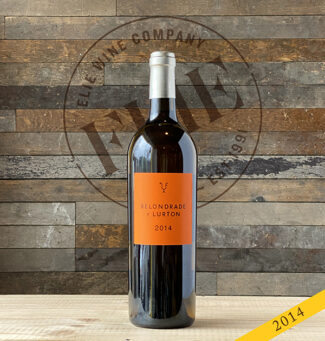 While we’re getting our 2014 on, this mature white wine from the Rueda DO—40,000 sprawling acres in the Spanish commune of Castilla y León—is an enological marvel. Transplanted Frenchman Didier Belondrade founded a winery based on his conviction that the Verdejo varietal could rival Chardonnay for aging potential, and as such, he treats Verdejo with the care that Burgundian estates bestow upon Chardonnay, fermenting and aging Verdejo on lees in 300-liter French oak barrels. Each of his 23 plots is fermented and aged separately, and at the end of one year, a selection and blending process take place, after which the wine stays in bottle for a minimum of six months before release. The wine has now reached its zenith, having developed deep honey notes with overtones of dried chamomile and candied lemon peel.
While we’re getting our 2014 on, this mature white wine from the Rueda DO—40,000 sprawling acres in the Spanish commune of Castilla y León—is an enological marvel. Transplanted Frenchman Didier Belondrade founded a winery based on his conviction that the Verdejo varietal could rival Chardonnay for aging potential, and as such, he treats Verdejo with the care that Burgundian estates bestow upon Chardonnay, fermenting and aging Verdejo on lees in 300-liter French oak barrels. Each of his 23 plots is fermented and aged separately, and at the end of one year, a selection and blending process take place, after which the wine stays in bottle for a minimum of six months before release. The wine has now reached its zenith, having developed deep honey notes with overtones of dried chamomile and candied lemon peel.
- - -
Posted on 2022.01.03 in Morey-Saint-Denis, Nuits-Saint-Georges, Gevrey-Chambertin, Chambolle-Musigny, Rueda, Côte de Nuits, France, Spain DO, Burgundy, Wine-Aid Packages | Read more...
Champagne Pierre Paillard The Quintessential Bouzy: Rich Ripeness & Chalky Finesse
Champagne, Considered
Champagne is undergoing an attitude renaissance, and much of the evolution is driven by consumers. Throughout the world of still wines, the focus is shifting toward improved agriculture, with organic and biodynamics creating sustainable terroir conditions. Champagne is doing likewise of course, along with promoting grower estates, small houses, reduced dosages and single-vineyard bottlings. But Champagne has long lived inside a rarefied world where much of its mystique was based on perception; its special-occasion aura, if consumers knew about much about the estates themselves, it was generally their ‘house style’—largely the result of winemaking technique. Bollinger spends more time on lees, for example, making it more yeasty in the mouth while Pol Roger allows fruit and floral notes to take the diva role by limiting lees contact. Reductive Champagnes like Salon do not undergo malolactic fermentation whereas oxidative wines, mostly Pinot Noir-based, are often oak aged, and taste rounder and sweeter.
What often gets lost amid the raised flutes and celebratory glitter is that Champagne is, first and foremost, wine, and as such, is highly expressive of its vineyard origins—when the winemakers allow this uniqueness to shine through. House styles have traditionally focused less on a reflective sense of the land on which the grapes were grown, and this is something that contemporary Champagne houses are beginning to explore, exploit, and advertise.
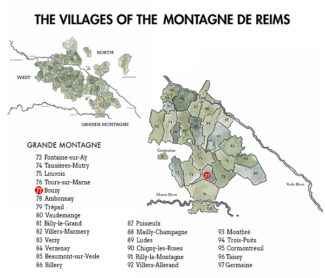
Each of the wines in this package is ‘climat’ specific, meaning that the grapes come from vineyard parcels as designated by the labels. It is a single Champagne house producing a variety of sparkling wines that emphasize—above all—a sense of place. These wines are expressive of various lieux-dits in and around the village of Bouzy; they are all classified as Grand Cru. Bouzy is one of the only 17 Grands Crus of the 320 villages, which make up Champagne’s seven sub-regions. (See Map Here)
Champagne Pierre Paillard
Bouzy – Grand Cru (Grande Montagne in The Montagne de Reims)
Paillard is a familiar name to fans of Champagne; Maison Bruno Paillard, the Reims-based producer, was founded in 1981 by Bruno Paillard and financed by the sale of Bruno’s Mark II Jaguar. The Bouzy branch of the family (they are cousins) have been at it a bit longer; Antoine Paillard first bought Bouzy vineyards in 1768. Antoine and Quentin Paillard represent the eighth generation in the family and the fourth generation to produce and bottle Champagne under the family name.
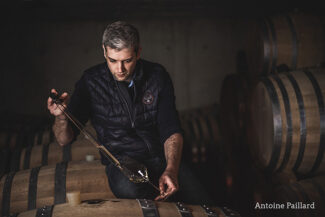
Bouzy is renowned for producing some of the finest Pinot Noir in Champagne, due in the main to its situation on the south-facing side of the Montagne de Reims, ideal for the difficult to ripen Pinot Noir grape. Nevertheless, unlike most other growers in the appellation, the 25 Paillard acres are planted with 40% Chardonnay, giving their wines both finesse and elegance.
Interestingly, the Paillards exclusively cultivate their own selection of Pinot Noir and Chardonnay, without a single clone on the estate, a diverse Selection Massale. Each plot is harvested and vinified separately in stainless steel vats and fermentation is carried out at lower temperatures to retain the aromatics. Each spring, a long process of tasting and blending is undertaken by Antoine and Quentin; the still wine is tasted, marked and discussed until there is consensus on the profile of the vintage. Blind tastings continue until the creation of each final cuvée. In June they are put into bottle for the second fermentation and cellared for a minimum of 3 years and as much as 10 years before being disgorged.
Champagne Pierre Paillard produces five cuvées. Two are non-vintage: Brut Grand Cru, generally a blend of two years and containing 60% Pinot Noir and 40% Chardonnay, and Brut Rosé, with a base of 70% Chardonnay, 23% Pinot Noir, and 7% Bouzy Rouge Pinot Noir. There are three vintage wines—a Blanc de Noirs from a single 0.8-acre parcel called ‘Les Maillerettes’ (planted in 1970), a Blanc de Blancs from a 1.5-acre parcel called ‘Les Mottelettes’ (planted in 1961) and a vintage wine that is only made in the best years and aged for seven to ten years before being disgorged.
A Note on Vintages:
2008: An icy December the previous year led to an even colder January. Below-average temperatures continued into the spring, and it did not warm up until May. But flowering was not affected and some summer outbreaks of oidium and mildew were quickly handled. August was cool, but by the mid-September harvest, the grapes were in perfect health. The vintage proved spectacular and is widely considered to be one of the top two vintages of this century so far.
2014: Dry conditions early got the growing season off to a healthy start, with a successful budburst and flowering were successful. The summer was not so kind, being cool and wet, with only the latter half of August eventually drying out. Although the rain was enough to make rot a concern, cooling breezes fortunately kept it at bay, and a benign September brought warm, dry conditions for ripening the grapes and effectively saving the harvest.
2016: 2016 was a difficult growing season, with early frosts and heavy rains between May and July putting much of the crop at risk. Conditions improved by August, but blistering heat further reduced yields. The grapes that remained were healthy, and overall, the quality was good, with wines displaying rich fruit and some nice acidity.
nv Champagne Pierre Paillard ‘Les Parcelles XVI’ Grand Cru – Bouzy Extra Brut ($57)
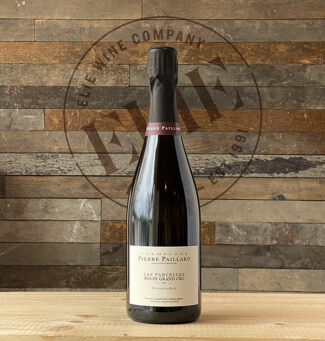 (Disgorgement: March 2021, Base Wine: 2016) Produced from 22 individually vinified parcels with their own vineyards, entirely in Bouzy, ‘Les Parcelles’ is a blend of 70% Pinot Noir and 30% Chardonnay, with 30% reserve wine. It is dosed at 1 gram per liter and has spent a full four years sur-lie prior to disgorgement. It’s an accurate portrait of Bouzy terroir with apple and salty stone-fruit notes. Citrus appears towards the finish, accented with herbs and chalk.
(Disgorgement: March 2021, Base Wine: 2016) Produced from 22 individually vinified parcels with their own vineyards, entirely in Bouzy, ‘Les Parcelles’ is a blend of 70% Pinot Noir and 30% Chardonnay, with 30% reserve wine. It is dosed at 1 gram per liter and has spent a full four years sur-lie prior to disgorgement. It’s an accurate portrait of Bouzy terroir with apple and salty stone-fruit notes. Citrus appears towards the finish, accented with herbs and chalk.
nv Champagne Pierre Paillard ‘Les Terres Roses XVII’ Grand Cru – Bouzy Rosé Extra Brut ($73)
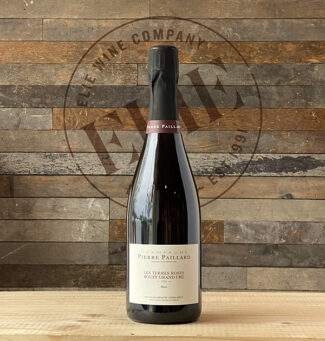 (Disgorgement: April 2020, Base Wine: 2017) The delicacy and refinement inherent in this Rosé is the result of the cuvée, 64% Chardonnay, and 36% Pinot Noir vinified white. It’s dosed at 2 grams per liter but is quite dry, making it an ideal companion to shellfish, especially lobster. The nose is yeasty, like freshly baked brioche, and the palate displays a leesy undercurrent along with blood-orange and tangerine flavors before a clean and acidic finish.
(Disgorgement: April 2020, Base Wine: 2017) The delicacy and refinement inherent in this Rosé is the result of the cuvée, 64% Chardonnay, and 36% Pinot Noir vinified white. It’s dosed at 2 grams per liter but is quite dry, making it an ideal companion to shellfish, especially lobster. The nose is yeasty, like freshly baked brioche, and the palate displays a leesy undercurrent along with blood-orange and tangerine flavors before a clean and acidic finish.
2014 Champagne Pierre Paillard ‘Les Mottelettes’ Grand Cru – Bouzy, Blanc de Blancs Extra Brut ($93)
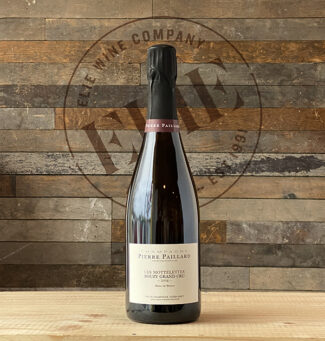 (Disgorgement: February 2019) From a miniscule plot of Chardonnay planted in 1961 in the lower part of Bouzy, where the pure chalk lays only twenty inches beneath the topsoil, the wine is pale golden in color with salted almond, apricot, pastry and fresh ginger notes beneath a delicate mousse. Dosage is at 1 gram/liter, with about 3000 bottles produced.
(Disgorgement: February 2019) From a miniscule plot of Chardonnay planted in 1961 in the lower part of Bouzy, where the pure chalk lays only twenty inches beneath the topsoil, the wine is pale golden in color with salted almond, apricot, pastry and fresh ginger notes beneath a delicate mousse. Dosage is at 1 gram/liter, with about 3000 bottles produced.
2016 Champagne Pierre Paillard ‘Les Maillerettes’ Grand Cru Bouzy, Blanc de Noirs Extra Brut ($91)
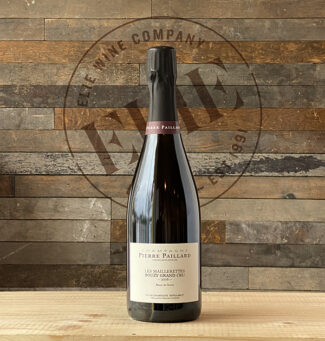 (Disgorgement: February 2021) ‘Les Maillerettes’ is a single half-acre of old vine Pinot Noir planted in 1970; the calcareous soils are made evident in the wine’s sleek structure and saline complexity. ‘Les Maillerettes’ spent 5 years on lees before disgorgement and is a proud representative of Bouzy Blanc de Noir, full-bodied and fleshy with fruit, especially cherries. Dosage: 1 gram/liter; around 2000 bottles and 122 magnums produced.
(Disgorgement: February 2021) ‘Les Maillerettes’ is a single half-acre of old vine Pinot Noir planted in 1970; the calcareous soils are made evident in the wine’s sleek structure and saline complexity. ‘Les Maillerettes’ spent 5 years on lees before disgorgement and is a proud representative of Bouzy Blanc de Noir, full-bodied and fleshy with fruit, especially cherries. Dosage: 1 gram/liter; around 2000 bottles and 122 magnums produced.
2008 Champagne Pierre Paillard ‘La Grande Récolte’ Millésime Grand Cru – Bouzy Extra Brut ($99)
 (Disgorgement: March 2021) 55% old vine Pinot Noir and 45% old vine Chardonnay from two sites on the south-facing slope of the mountain of Reims. The Pinot Noir comes ‘Les Maillerettes’ and the Chardonnay comes from ‘Les Mottelettes’ and represent the mother vines used for the massal selections made in-house at Champagne Pierre Paillard. Both vineyards are less than an acre in size, and the wine represents the quintessence of house style and terroir. A rare Champagne that may benefit from decanting, ‘La Grande Récolte’ is dosed at 1 gram per liter, and spent 8 years on lees before disgorgement. About 12,000 bottles made.
(Disgorgement: March 2021) 55% old vine Pinot Noir and 45% old vine Chardonnay from two sites on the south-facing slope of the mountain of Reims. The Pinot Noir comes ‘Les Maillerettes’ and the Chardonnay comes from ‘Les Mottelettes’ and represent the mother vines used for the massal selections made in-house at Champagne Pierre Paillard. Both vineyards are less than an acre in size, and the wine represents the quintessence of house style and terroir. A rare Champagne that may benefit from decanting, ‘La Grande Récolte’ is dosed at 1 gram per liter, and spent 8 years on lees before disgorgement. About 12,000 bottles made.
- - -
Posted on 2022.01.02 in France, Champagne | Read more...
The Champagne Society December 2021 Selection: Champagne Fleury
Champagne Fleury
Ecological Pioneer with Purpose and Passion (Côte des Bar)
Cépages Blancs Extra-Brut 2010 OR Sonate 2012 Extra-Brut ‘Natural’ *
*Special Price for members of the Champagne Society is $88. Not available to non-members (Sold out). Six other cuvées are available. See end of newsletter.
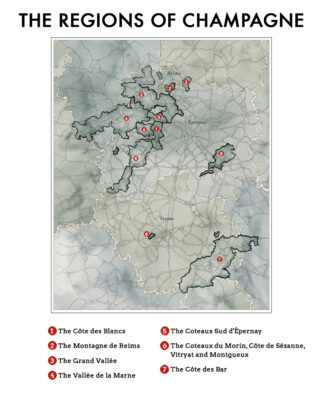
The Côte des Bar is located in the southern part of the Champagne production area, where climate, geography and careful vine husbandry combine to produce delicate, aromatic wine that is highly prized among the master blenders of Champagne’s most heralded labels. The land itself is a patchwork of vineyards planted on Jurassic slopes that overlie limestone bedrock with multiple exposures; the lush valleys that predominate throughout the Côte des Bar connect with those of the Seine and the Aube. The region encompasses 62 villages (divided between sub-regions Bar sur Abois and Barséquanais) and contains about 20,000 acres planted primarily to Pinot Noir, with about 12% Chardonnay and another four percent of Meunier.
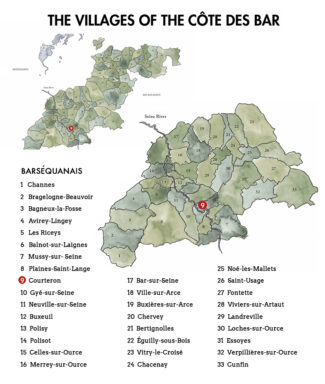
In the Côtes de Bar, Fleury plays two roles; it is a star long established in the Champagne heavens and a new star rising. In 1929, at the outset of the Great Depression, wholesale grape prices fell so sharply that grower Robert Fleury decided to start bottling his own Champagne. The estate itself had been founded nearly three decades earlier in Courteron, in the Aube district, where two rivers once converged to form the Seine. These ancient waters created slopes on which the Fleury family now owns ten plots, a total of forty acres planted primarily to Pinot Noir. The oldest vines were planted in 1970, and new cuttings are established every year to maintain the vitality that younger vines bring to Champagne.
Biodynamics are key to the current ideology at Fleury, pioneered by Jean-Pierre Fleury, whose interest in sustainable farming began in the 1970s when he tried using manual tilling (as opposed to herbicides) and composting (as opposed to synthetic fertilizers). He began a trial with biodynamics on a few acres, and in 1992 used it across the whole of his vineyard holdings. Today, his son Jean-Sébastien Fleury carries on the mission, understanding that at its most basic definition, ‘terroir’ means soil. “The key is soil health,” he maintains. ‘We must keep the earth healthy. The structure of the soil gives back the essence of the terroir’

Appreciate the Balance and Share the Mysteries of Nature
The Japanese have long espoused a mystical connection between the earth and sky; a spectacle of nature and the subtle balance that prevails between tradition and modernity. That is a philosophy that winemaker Jean-Sébastien Fleury, only twenty-three years old, grew up with. His father, Jean-Pierre, who originally wanted to be an astronomer, embraced the concept that every human on earth has a small but essential role in maintaining the harmony of the universe, and fell in love with cultures founded on principles of equity, between people and with the land, and decided early to raise his family in physical and spiritual health.
Champagne is especially suited to this thought process; at its core, it is an attempt to find a nearly magical equilibrium between nature and man’s ability to enhance it. An understanding of the microcosm and the macrocosm is essential to a biodynamic vision, and as an homage to the interdependence of earth and sky, Fleury vineyard practices seemed—in the last century—as almost druidic, although they are now being embraced throughout France.
Enhancing and Understanding Terroir’s Character
Champagne is uniquely situated to take advantage of a multitude of superlatives in land and sky; the relatively northerly latitude and nearness to the ocean subject it to dual climates, oceanic and continental. The soil is a mosaic, structured with a subterranean limestone layer that acts to retain moisture and allows grapes to thrive in dry seasons and survive droughts. Combined with good hillside drainage, Jean-Sébastien Fleury wisely touts this topographical advantage: “The subsoil here is even more important to the vines than the soil.”
He goes on to explain that the silica in the earth produces lightness and aromatic finesse in a wine, whereas the marly and clay limestone beneath the surface adds alcoholic strength. “The closer the rock is to the surface,” he says, “the finer the Champagne.”
The estate is near the Plateau of Langres, and Fleury says that this is equally important to the signature terroir. But, as always, it is the touch of man that produces Champagne in concert with climate and soil. “Incorporating all these factors strengthens our knowledge of nature’s rhythms and improves the care we give to the plants and fruits so that the terroir reveals its character.”
The Biodynamic Principles: Respecting Earth’s Life Forces
The Fleury family looks at the estate as a living organism and pampers it as one might a beloved family pet. “We have been cultivating our land in line with its habitat for more than thirty years, acknowledging nature’s rhythms and the influence of terrestrial and cosmic forces. At first, this agricultural principle may seem demanding and esoteric, but it is truly a virtuous circle. We envision wine as a support of nature’s creation and undeniably enhances the product we bottle.” All wines are labeled ‘Organic Agriculture TM’ and ‘Biodynamic.’
Fleury delves deeper: “A vineyard is a monoculture, so our work is directed toward increasing biodiversity. Our viticultural work is focused on both the soil and the plant. Cultivation is done by hand in addition to the application of biodynamic preparations. Vine work is synchronized with planetary and lunar cycles; this is based on the effects these heavenly bodies have on root, leaf, flower and fruit development. For example, vine suckering, de-leafing and de-budding is done on ‘leaf day’ in the lunar calendar. The grafts and harvest is done in accordance with the lunar spring, when the moon is rising, a time that favors heavy sap flow. The lunar fall, when the moon is descending, is the best time for pruning.”
Vinification and the Winery: Producing Earth’s Best
In keeping with this overall view, Jean-Sébastien considers Fleury wine to be an expression of harmony; the earth’s quintessence. And yes, according to the estate’s vinification guidelines, the bottling is done on earth’s ‘fruit day.’ Before that, the grapes, hand-picked, are crushed and pressed in two 4000 kg. wooden hand-presses, and a third which is automated. Champagne production is, by its nature, labor intensive, but to make it even more exacting (and labor be damned) the Fleury family vinifies each of their ten lots separately, allowing them to better track the quality of the fruit from individual parcels. “Like a painter with a palette of colors, we assemble cuvées from grapes with different characteristics based on terroir and history.”
After fermentation, the wine remains on its lees until spring, and is first tasted at the spring equinox, and again in late April; these are critical steps wherein the wine is carefully evaluated before assembling the blend. In a system known as ‘inverse solera’, they then blend raw wine from the previous vintage with reserved wine from previous years, saving a portion of the new wine to top off the stock. This is a variation on the classic method for assembling Sherry: ‘La Solera inversée’ is a unique approach, and Jean-Sébastien is credited with creating a ‘time library’ of foudres containing earlier vintages housed in a timber-framed gallery.
The cuvées are aged with circumspection; three to five years for the Blanc de Noirs, Rosé and Fleur d’Europe and up to ten years for the Millésimes. As in all things ‘Fleury’, even the downtime of aging carries with it metaphysical symbolism, and it is referred to as ‘returning the product to its original land’ before exposing it to light again during the tasting. In the end, all elements harmonize, revealing the purity of process and the subtlety of nature.
Due to limited releases members will be assigned one of the following cuvées:
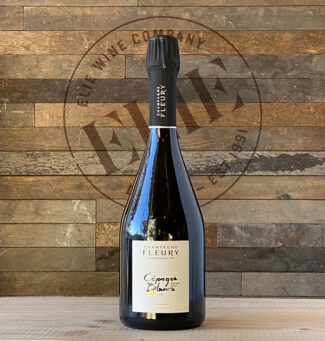 ‘Rainbow White’
‘Rainbow White’
Cépages Blancs Extra-Brut 2010 ($88)
An exclusive Blanc de Blanc made from the estate’s best plots of Chardonnay (Champraux and Valprune), where old vines have penetrated deeply into the Kimmeridgian subsoils. 2010 was a fairly difficult year in Champagne, with dry conditions retarding grape development early in the season. When rain arrived in August it was torrential, causing widespread disease pressure, but Chardonnay fared very well where Pinot Noir did not. The return of dry conditions in September was a godsend, but meticulous vignerons like the Fleury family understood that sorting in the vineyard and winery was crucial. The wine itself is majestic, with notes of white flowers, acacia honey, brioche, toasted bread rolls and dried stone fruits.
OR
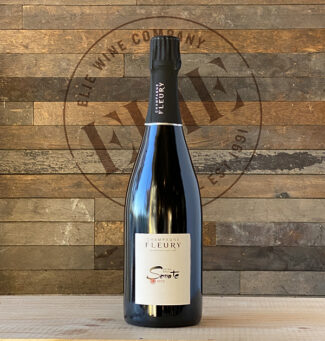 ‘The Music of Time and Space’
‘The Music of Time and Space’
Sonate 2012 Extra-Brut ‘Natural’ ($88)
A somewhat traditional Champagne blend—78% Pinot Noir and 22% Chardonnay—the cuvée is a splendid showcase for the exceptional 2012 vintage, where frost and hail reduced yields early in the season, and a warm summer produced exemplary acidity and grape health in the fruit that remained. ‘Sonate’ resonates with a blend of 35-year-old vines from the Champraux and Charme de Fin plots; it opens gradually and quickly improves, showing perfect balance between acidity, softness and tannins. Brown spices appear quickly, with nutmeg suggesting mature tones while acids provide a ghost of freshness. Beyond this, the palate is rich with bright cherry, apple crisp and honeyed croissant.
Champagne Fleury’s other cuvées …..
 ‘When Mars Meets Venus’
‘When Mars Meets Venus’
‘Rosé de Saignée’ 2015 Brut ($68)
Winemaker Notes:
100% Pinot Noir from 30-year vines. Color is obtained by short maceration of the grapes before pressing. Malolactic fermentation. No dosage.
This wine has a bright ruby tinted color. With a delightful bouquet of fresh red fruits, blackcurrants and plum pie, the aromas combine both richness of vinosity. Aging potential is between 3 and 5 years.
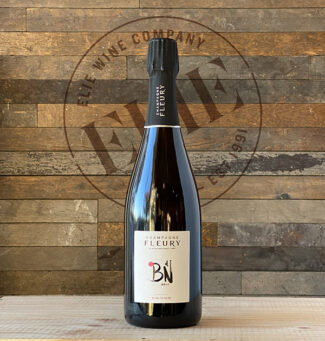 ‘Pinot Noir Planet’
‘Pinot Noir Planet’
‘Blanc de Noirs’ Brut ($55)
Winemaker Notes:
100% Pinot Noir. Originally created in 1955 by Robert Fleury, we changed the name of our classic cuvée to “Blanc de Noirs Brut” in 2010. Every new vintage is added to the previous vintage to create a perpetual reserve in large casks, a process also known as the “Solera” method. The cuvée is then aged “sur lattes” for four years. Blending 2016 (30%) and reserve wines (70%) with fermentation completed in thermo-regulated tanks and wooden tuns for reserve wines. Malolactic fermentation. Dosage is 3.6 grams/liter.
This pure Pinot Noir with straw-gold tints reveals an elegant and expressive nose, with delicate aromas of white peach and iris. Fresh on the palate with a crisp structure and lasting fruity flavors. Aging potential is between 3 and 5 years.
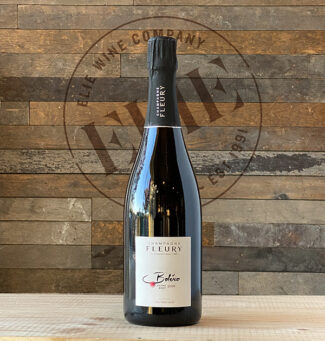 ‘The Notes of Twilight’
‘The Notes of Twilight’
‘Boléro’ 2009 Extra-Brut ($115)
Winemaker Notes:
100% Pinot Noir from 25-year old vines in Charme de Fin, Côte de Champraux, Meam Bauché and Montégné parcels. Last in production in 1990, this cuvée made a reprise in 2004. Fermentation is completed in thermoregulated tanks (50%) and oak barrels (50%). Malolactic fermentation is in the bottle under cork with ‘agrafe’. Residual sugar is 3.2 grams/liter naturally with no dosage.
The vintage expresses an array of complex aromas, dried fruits, toasted almonds, apricots, followed by herbaceous and mineral notes. On the palate we find flavors of freshly baked-bread, and juicy grapes, with a crystalline effervescence. Aging potential is between 5 and 10 years.
 ‘The Sun has a Meeting with the Moon’
‘The Sun has a Meeting with the Moon’
‘Fleur de l’Europe’ Brut Nature ($60)
Winemaker Notes:
85% Pinot Noir and 15% Chardonnay. The first ever biodynamic cuvée in Champagne! The Europe which witnessed the fall of the Berlin Wall inspired the name of this wine. The ethereal and floral Chardonnay brings a special elegance to this cuvée. Despite at first receiving a dosage, it has been zero-dosage for the last 10 years. Blending 2014 (75%) and reserve wines (25%) with fermentation completed in thermoregulated tanks and oak barrels. Reserve wines are aged in oak tuns. Malolactic fermentation. No sugar added.
A Brut Nature Champagne, expressive with exceptional finesse! A bright gold robe carries aromas of honey and acacia. The mouthfeel is ample and generous with a surprising freshness. This is a chiseled wine, mouth- wateringly vibrant, with a touch of salinity. Aging potential is between 3 and 5 years.
 ‘Memories of a Star’
‘Memories of a Star’
‘Notes Blanches’ 2014 ($93)
Winemaker Notes:
100% Pinot Blanc from 25-year old vines in Charme de Fin and Valverot parcels. Although a variety in Champagne, Pinot Blanc has typically only been found in blends. However, in 2009 this rare, expressive and exotic variety was granted its own pure mono-varietal cuvée. Free of any dosage, this is definitely one to discover! No dosage.
On the palate there is an ample bouquet with aromas of yellow fruits and white pepper, enveloped by a supple texture and an energetic finish. Aging potential is between 3 and 5 years.
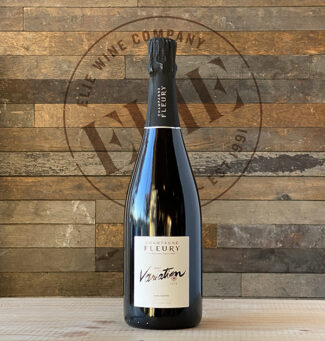 ‘Return of the Eclipse’
‘Return of the Eclipse’
‘Variation’ 2014 Brut ‘Natural’ ($130)
Winemaker Notes:
100% Pinot Gris. As a result of its vinification in oak, this wine has a powerful and complex nose, with a unique blend of aromas, yellow fruits, tropical fruits, and almonds. Fresh and crisp on the palate this wine is full of aromatic delights, which are enveloped by an ample mouthfeel and a long and expansive finish. Malolactic fermentation. No dosage. Aging potential is between 3 to 5 years.
- - -
Posted on 2021.12.12 in France, The Champagne Society, Champagne | Read more...
A Burgundy by Any Other Name: Hidden Value in Côte d’Or’s ‘Régionale’ Burgundy Ten Outstanding Producers in 6 Reds and 4 Whites (10-Bottle Pack $399)
Not all Burgundy is the stuff of legend, but all IS the stuff of Burgundy. That is, wine from a narrow strip of French farmland that runs for around sixty miles, from Auxerre in the north to Mâcon in the south, or to Lyon, if Beaujolais is included. But Burgundy is more than simply wine; it is a way of thinking. After many centuries of experimentation and the subsequent subdividing of vineyards based on family inheritance, mesoclimates, soil types and topographical features, modern Burgundy exists as a mosaic of fences, walls and property lines.
The most prestigious of these wines come from the 32 Grand Cru vineyards in the Côte d’Or; literally, the ‘Hills of Gold’, further subdivided into Côte de Nuits and Côte de Beaune. The top domains produce rarified wines with stratospheric price tags, but represent only about 2% of Burgundy’s total 70,000 planted acres. Most of the wine produced in the appellation is regional wine—a fourth tier (after Grand Cru, Premier Cru and Villages) that accounts for 52% of Burgundy’s total output. White wines making up about half of that; red wine accounts for 27%, Crémant 21% and rosé a drop in the bucket at 1%.
The seven appellations contained within the ‘régionale’ classification produce earthy wines available at down-to-earth prices and represent a more complete understanding of Burgundy’s overarching philosophy of terroir. As such, régionale wines don’t seek to compete with the superlative top-shelf Crus of the Côte d’Or, and better yet, many continue to fly under the radar.
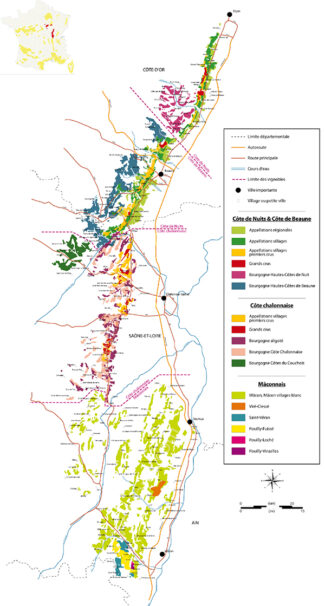
Bourgogne (Régionale Bourgogne)
So specific are the cru vineyards of Burgundy that ‘régionale’ vineyards may exist in the literal shadow of more renowned domains, occasionally separated by hundreds, or even as little as dozens of feet. Régionale Bourgogne wines tend to be culled from vineyards located along the foot of more prestigious wine-growing slopes on limestone soil mixed with some clays and marls, where the earth is stony and quick-draining.
Unlike Bordeaux, where classifications are based on individual châteaux (capable of buying other vineyards and expanding), Burgundian label classifications are more geographically focused. A single vineyard, therefore, may have multiple owners, each with a small piece of the action.
The ‘Bourgogne’ label first appeared in 1937, and in 2017, a further classification permitted wines from vineyards located within the Côte d’Or to be labeled as ‘Bourgogne Côte d’Or’; it’s a great tool for a consumer looking to explore the wide diversity of vineyard among the Hills of Gold while maintaining a terroir-focused, climat approach to Burgundy.
Bourgogne Rouge (Côte de Nuits)
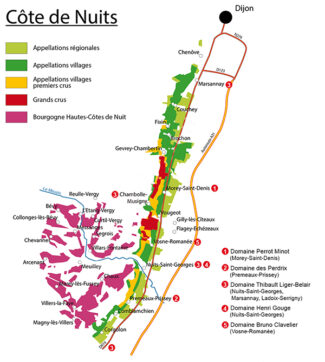
Domaine Perrot-Minot
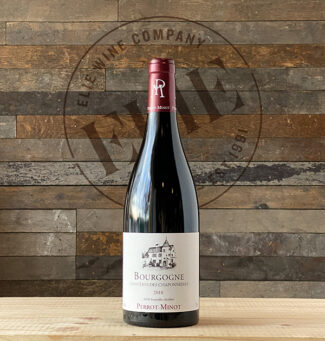 Domaine Perrot-Minot ‘Gravières des Chaponnières’, Bourgogne (Morey-Saint-Denis) 2018 Rouge ($69)
Domaine Perrot-Minot ‘Gravières des Chaponnières’, Bourgogne (Morey-Saint-Denis) 2018 Rouge ($69)
After spending seven years as a wine broker, Christophe Perrot-Minot became the manager of Domaine Perrot Minot in 1993. With him he brought deep and broad knowledge of the winegrower’s trade and firm convictions about what not only constitutes a great wine, but how to produce it. Among his many innovations has been a renewed focus on sorting during harvest and a goal of producing more elegant wines has been achieved through the use of less new oak in aging well as less extraction during fermentation, achieved (in Christophe’s words) by “using more ‘remontage’ (a gentle pumping over of fermenting wine) instead of ‘pigéage’ (vigorous punching-down of the grapes to draw more color and tannins). The domain includes vines in a considerable number of Premier Cru and Grand Cru appellations throughout the Côte de Nuits as well as two vineyards in the régionale appellation located in the town of Morey-Saint-Denis; a plot of 55-year-old vines and another about half that age. Bourgogne Gravières des Chaponnières shows cherry brandy, earth and graphite with chalky tannins and a savory tang.
Domaine des Perdrix
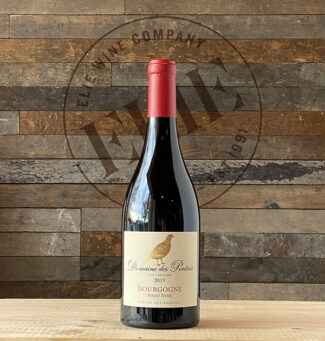 Domaine des Perdrix, Bourgogne (Premeaux-Prissey) 2019 Rouge ($43)
Domaine des Perdrix, Bourgogne (Premeaux-Prissey) 2019 Rouge ($43)
Perdrix (in English, the partridge that appears on the label) was taken over in 1996 by the Devillards, owners of Domaine du Château de Chamirey in Mercurey, Domaine de la Ferté in Givry, Domaine de la Garenne in Mâconnais and Domaine Rolet in Jura. Their régionale red is a blend of several plots of Pinot Noir located in Premeaux-Prissey planted between 1956 and 1965, and is treated with the same circumspection of their cru wines. Unlike Minot’s Bourgogne, pigéage punch-downs are employed in a quest for more, rather than less extraction. The wine shows lovely black cherry and raspberry up front and a slightly earthy undertone with moderate spice, mostly cinnamon and cola, and is crisply acidic on the finish
Domaine Thibault Liger-Belair
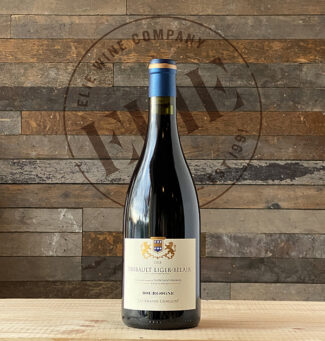 Domaine Thibault Liger-Belair ‘Les Grands Chaillots’, Bourgogne (Nuits-Saint-Georges, Marsannay, Ladoix-Serrigny) 2018 Rouge ($43)
Domaine Thibault Liger-Belair ‘Les Grands Chaillots’, Bourgogne (Nuits-Saint-Georges, Marsannay, Ladoix-Serrigny) 2018 Rouge ($43)
At the age of 26, having studied viticulture and oenology and put in six years with a communications firm in Paris, Thibault Liger-Belair gave in to his true passion and began to make wine. The following year (2002) represented his first harvest of Nuits-Saint-Georges, Nuits-Saint-Georges Charmottes, as well as Vosne-Romanée Aux Réas. Les Grands Chaillots is an assemblage of different terroirs; a third originates in his own Nuits-Saint Georges vineyards and the rest is purchased from various parcels Marsannay and Ladoix-Serrigny. Says Liger-Belair: “This wine is a little Chambolle-like in style. The palate is sweet and candied on the entry with blood orange fusing with red cherry/kirsch notes with good delineation on the finish.”
Domaine Henri Gouge
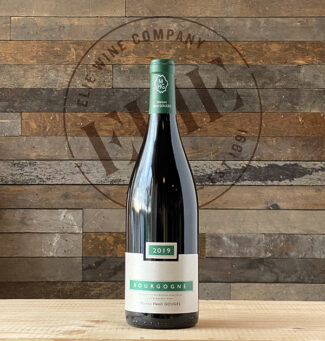 Maison Henri Gouge, Bourgogne (Nuits-Saint-Georges) 2019 Rouge ($38)
Maison Henri Gouge, Bourgogne (Nuits-Saint-Georges) 2019 Rouge ($38)
Domaine Henri Gouges has been a powerhouse in Nuits-Saint-Georges since the 1930s, and Gouges himself was tasked with delineating the crus in Burgundy for the Institut National d’Appellation d’Origine INAO. Today, the vineyard holdings of Domaine Henri Gouges cover 36 acres, including parcels in seven premier cru-designated sites, nearly all planted exclusively Pinot Noir. The wine displays pronounced intensity, with a nose showcasing strawberry, red rose, cured meat, gravel, underbrush and white pepper, finishing with crushed rock minerality.
Bourgogne Blanc (Côte de Nuits)
Domaine Bruno Clavelier
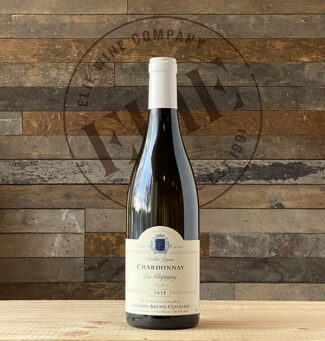 Domaine Bruno Clavelier ‘Les Glapigny’, Bourgogne (Vosne-Romanée) 2018 Blanc – Vin de France ($36)
Domaine Bruno Clavelier ‘Les Glapigny’, Bourgogne (Vosne-Romanée) 2018 Blanc – Vin de France ($36)
Bruno Clavelier made an odd if direct path from the rugby field to the wine cellar, taking over his grandfather’s estate in the 1980s. The gifted athlete has placed a premium on low intervention winemaking, with 20% whole bunches used and a vinification process that he considers ‘more an infusion than a maceration. There is no punching down and not much pumping over.’ He is more a student of geology than cellar technique. ‘Les Glapigny’ vineyard is planted with 70-year-old Chardonnay vines and straddles the boundaries of Vosne-Romanée. At a little over an acre, the vineyard sits of rich alluvial soil that does not reveal specific terroir, but rather is an expression of pure Chardonnay fruit with some additional oak backbone.
Bourgogne Rouge (Côte de Beaune)

Olivier Leflaive
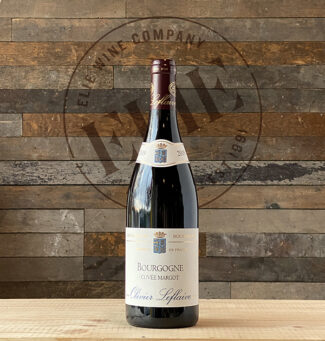 Olivier Leflaive ‘Cuvée Margot’, Bourgogne (Pommard, Volnay, Pernand-Vergelesses, Puligny-Montrachet, Beaune) 2019 Rouge ($38)
Olivier Leflaive ‘Cuvée Margot’, Bourgogne (Pommard, Volnay, Pernand-Vergelesses, Puligny-Montrachet, Beaune) 2019 Rouge ($38)
So renowned is the name Olivier Leflaive in Burgundy that no real bio is required. ‘Cuvée Margot’s’ winemaker, Franck Grux, was kind enough to share details of this wine, and further embellishment is unnecessary: “As usual, these grapes used in 2019 came from different classified vineyards through the Côte de Beaune; 30% from Pommard, 20% from Volnay and 20% from Meursault. Pernand Vergelesses contributed 15%, while a sector of Puligny gave us 10%; the rest came from Hautes Côtes de Beaune. They received one week of primary fermentation followed by two weeks of gentle cuvaison. The wine saw 15% new oak for one year and was bottled just before Christmas, 2020 without fining.” It shows refined nuances of black currant, red fruit, earth, spice, and alluring floral aromatics with remarkable complexity.
Bernard & Thierry Glantenay
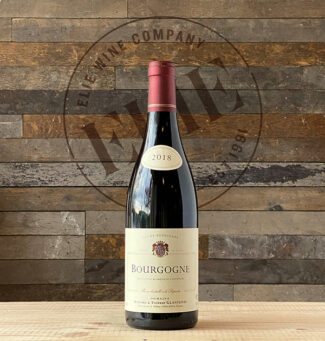 Bernard & Thierry Glantenay, Bourgogne (Volnay, Pommard) 2018 Rouge ($39)
Bernard & Thierry Glantenay, Bourgogne (Volnay, Pommard) 2018 Rouge ($39)
With fewer than twenty acres to their name, the father/son team of Bernard and Thierry Glantenay (with Thierry now at the helm) offer quality over quantity; the Volnays are ethereal and the Pommards powerful. Having trained as an engineer, Thierry is used to asking methodical questions and perfecting efforts with every vintage. As one of the Côte de Beaune’s rising stars, his wines are precise, focused, and most of all, reflective of their underlying terroir. His Bourgogne Rouge is satiny and succulent aromas of blackberry and raspberry give way to crunchy acidity and a generous core of fruit.
Bourgogne Blanc (Côte de Beaune)
Domaine François Carillon
 Domaine François Carillon, Bourgogne (Puligny-Montrachet, Meursault) 2019 Blanc ($29)
Domaine François Carillon, Bourgogne (Puligny-Montrachet, Meursault) 2019 Blanc ($29)
Although only created in 2010, the family of François Carillon has been in the wine business for 500 years. The winery is in the heart of Puligny-Montrachet, among Burgundy’s most renown terroir for white wines and sits on forty acres of prized land in Puligny-Montrachet, Chassagne-Montrachet and Saint-Aubin. The estate produces about seventeen (depending on the harvests) different appellations, mainly in Chardonnay. His Bourgogne is racy and engaging with tangy acidity, sweet pear and vanilla notes, integrated oak and a charge of acidity on the finish.
Domaine Vincent Girardin
 Domaine Vincent Girardin ‘Saint Vincent’ 2019 (Côte de Beaune) Blanc ($26)
Domaine Vincent Girardin ‘Saint Vincent’ 2019 (Côte de Beaune) Blanc ($26)
Based in Meursault, Vincent Girardin (the domain’s founder) originally farmed around 50 acres while acting as a négociant, buying fruit from growers who adhered to certain codes of practice, including higher trellising for better photosynthesis and avoiding the use of herbicides and insecticides. Vincent Girardin sold the business in 2012, but Eric Germain—his winemaker since the early 2000s—ensures that Girardin’s winemaking philosophy continues. The wine displays a plush core of lime with a backdrop of green apple, pears, pineapple and a creamy malolactic finish.
Domaine Etienne Sauzet
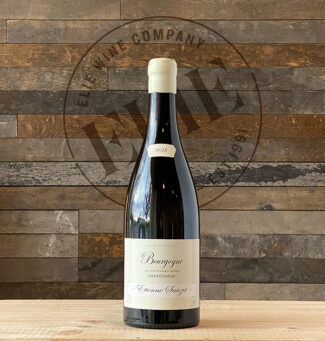 Domaine Etienne Sauzet, Bourgogne (Puligny-Montrachet, Meursault) 2018 Blanc ($36)
Domaine Etienne Sauzet, Bourgogne (Puligny-Montrachet, Meursault) 2018 Blanc ($36)
The original Etienne Sauzet bought thirty acres in the early part of twentieth century, and established himself as one of the leading producers in Puligny-Montrachet. Several generations and many subdivided acres later, the name still resounds throughout the region. Today, under the management of Emilie and Benoît Riffault, the estate is synonymous with superbly finished, full-bodied wines. The Bourgogne is a cuvée of fruit drawn from three family-owned estates, and shows a nose of gardenia blossoms and honeyed lychees wrapped around a core of minerality with peach notes and light oak tannins.
Côte d’Or 2018 Vintage Report
Referred to colloquially as ‘the Heatwave Summer’, 2018 began with an exceptionally wet winter, which left the water tables high. May flowering was ideal, but the long, dry summer months stressed younger vines while older, deeply-rooted cultivars were able to thrive. The challenge for growers was to manage ripening, which occurred much earlier than usual, and growers had to adapt to what some are referring to as ‘the new normal. “The whites have great tension and freshness, which I was not expecting,” says Dominique Lafon of Domaine des Comtes Lafon in Meursault. “The crop was big, and I think this helped to keep alcohol levels down. With a smaller crop there would have been a lot of heaviness.”
With reds, there was a bit more nuance, since Pinot Noir requires Goldilocks conditions to ripen correctly; left too long in the heat, they become jammy, without the freshness and finesse craved by connoisseurs of red Burgundy. Mathilde Grivot of Domaine Jean Grivot in Vosne-Romanée. “My entire family and the team worked in the vineyard to prolong the vegetative cycle.” She emphasizes that “to make a good Pinot Noir, you need to have to have the perfect maturity of the skin.”
Côte d’Or 2019 Vintage Report
In the words of the 18th-century Cistercian monk, Dom Denise, “In Burgundy, the best wines are produced in years when the harvest occurs in mid-September.” In 2019, a dry winter set the stage for a season where vines would suffer hydric stress, leading to low yields and small, thick-skinned berries. August and early September were cool and sometimes cloudy, although hot, sunny conditions returned for harvest; a dry north wind concentrated both sugars and acidities alike in the final weeks before picking began at the precise time that Dom Denise recommended. 2019’s wines, both red and white, tend to be rich and classical in profile, and Aubert de Villaine, a co-owner of the Domaine de la Romanée-Conti, points out a remarkable evolution: “We are convinced that the vines are adapting to warmer, drier years, and we find this very reassuring,”
- - -
Posted on 2021.12.11 in Volnay, Côte de Nuits, Pernand-Vergelesses, Morey-Saint-Denis, Puligny-Montrachet, Premeaux-Prissey, Beaune, Premeaux-Prissey, Chassagne-Montrachet, Nuits-Saint-Georges, Meursault, Marsannay, Côte de Beaune, Côte de Beaune, Ladoix-Serrigny, Vosne-Romanée, Pommard, France, Burgundy, Wine-Aid Packages | Read more...
Bordeaux’s First Among Equals: Paulliac’s Perfect Soil for Cabernet Sauvignon Delivers Power and Elegance in First Growth and Second Growth Châteaux’ 2nd & 3rd Wines (6-Bottle Pack $439)
Pauillac: Cabernet Sauvignon’s Holy Land
Bordeaux looms at the periphery of every red wine experience; like Michelangelo hovering above an art class or Shakespeare over English Literature, the twin banks of the River Gironde form a greater tributary from which our sense of wine appreciation flows.
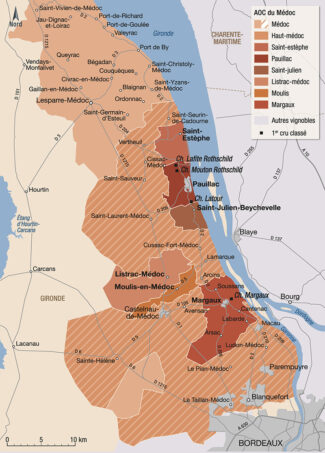 Whereas the Right Bank of the Gironde is known for clay-rich soils that produce smooth, softly-fruited wines with balancing tannins, the Left Bank—where vines tend to struggle through limestone and gravel—is known for tannic wines that become exponentially more complex with age. The Left Bank encompasses the Médoc region, whose face, quite arguably, is Pauillac. Pauillac represents three of the five First Growths named in the 1855 Classification, with another fifteen classified wines adding trophies to the wall, including two heralded Second Growths. The wines of Pauillac contain a characteristic finesse, elegance, and intensity essentially unmatched by any growing region elsewhere in the world.
Whereas the Right Bank of the Gironde is known for clay-rich soils that produce smooth, softly-fruited wines with balancing tannins, the Left Bank—where vines tend to struggle through limestone and gravel—is known for tannic wines that become exponentially more complex with age. The Left Bank encompasses the Médoc region, whose face, quite arguably, is Pauillac. Pauillac represents three of the five First Growths named in the 1855 Classification, with another fifteen classified wines adding trophies to the wall, including two heralded Second Growths. The wines of Pauillac contain a characteristic finesse, elegance, and intensity essentially unmatched by any growing region elsewhere in the world.
The special offer includes two bottles Pichon ‘Réserve’, two bottles Pichon ‘Les Griffon’ and one bottle each of Latour’s ‘Pauillac’ and Lafite’s ‘Légende’. Six bottles pack for $439.
A Tale of Two Second Growths Told in their Second Wines
The tradition of ‘second’ Bordeaux wines predates Classified Growths by at least a century, and the innovation is credited to Château Margaux, who first released a wine labeled ‘2eme vin’ in the seventeenth century to indicate that the wine, while produced on the estate, came from vines considered unsuited for inclusion in the Grand Vin. In Pauillac, the first estate to make use of a second wine was Château Pichon Longueville Comtesse de Lalande, who debuted La Réserve de la Comtesse in 1874.
A second wine may be a marketing tool to get famous château names in front of consumers at a more affordable price, and as an outlet to bottle wines from grapes from younger vines and declassified lots—a system that undoubtedly serve to improve the quality of the Grand Vin. Third wines, a growing tradition among top estates where the selection process is most rigorous, likewise serve to improve the quality of the second wines. It must be emphasized that the primary difference between these strata of releases is the quality of the grapes used, and that the same winemaking team that creates the first label is also responsible for the others, so that the resemblance to the Grand Vin is often striking.

‘Wine is a Civilization’
Château Pichon-Longueville-Comtesse-de-Lalande:
With a focus on ‘impeccable land stewardship’, Château Pichon-Longueville-Comtesse-de-Lalande’s 1982 vintage garnered a perfect 100 points from wine critic Robert Parker. That is one of the reasons the estate is often referred to as a ‘Super Second’, meaning that it consistently produces wine to rival the First Growths classified in 1855 despite its official status as a Deuxième Cru, or Second Growth. In 2006, the majority interest in Château Pichon-Longueville was sold to the Rouzaud family, which also owns the Champagne house Louis Roederer.
All five Bordeaux grapes are grown on the estate’s two hundred acres, dominated by Cabernet Sauvignon, Merlot and Petit Verdot. Wines from Comtesse de Lalande are considered among the most voluptuous wines in the Médoc due to the high proportion of Merlot used in the final blend; the increasing proportion of Cabernet used in modern cuvées to add structure does not diminish the amount of Merlot used; it means less of the other varieties. The current cépage reflects the vineyard plantings, roughly 65% Cabernet Sauvignon, 25% Merlot, 7% Cabernet Franc and 3% Petit Verdot. The heart of these plantings is a 150-acre parcel of vines situated southwest of Pichon Baron, close to the manor. The best parcels overlook the river and are filled with vines with an average age of 40 years, although the oldest vines are nearly 90, having been planted in the 1930s.
Winemaking techniques reflect both tradition and innovation. A new triple-tiered cellar moves everything by gravity and double-skinned vats allow Pichon Lalande to vinify on a parcel-by-parcel basis, helping with softer, more gentle extractions and helping the wines legendary sensuousness, replete concentrated layers of ripe berries and perfumed with fresh violet blossoms, tobacco leaves, earth and truffles.
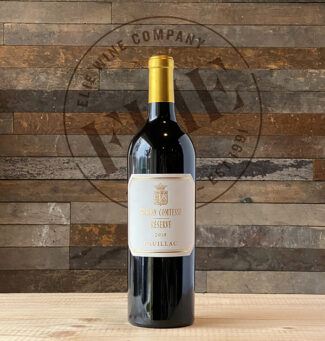 2018 Pichon Comtesse ‘Réserve’ ($68): A textbook Pauillac second wine that outstrips many of Pauillac’s first wines. An early-drinking incarnation of Pichon Comtesse’s Grand Vin, the blend is 53% Cabernet Sauvignon and 42% Merlot with the balance Petit Verdot and Cabernet Franc. The name changed with the 2017 vintage, becoming the-wine-formerly-known-as-‘Réserve de la Comtesse’; the new name is cleaner and the label somewhat sleeker. The wine remains, as always, plush and round, with silken black fruit on the fore-palate and vibrant with ripe raspberries and baked plums above licorice, cedar, ground cloves and woodsmoke
2018 Pichon Comtesse ‘Réserve’ ($68): A textbook Pauillac second wine that outstrips many of Pauillac’s first wines. An early-drinking incarnation of Pichon Comtesse’s Grand Vin, the blend is 53% Cabernet Sauvignon and 42% Merlot with the balance Petit Verdot and Cabernet Franc. The name changed with the 2017 vintage, becoming the-wine-formerly-known-as-‘Réserve de la Comtesse’; the new name is cleaner and the label somewhat sleeker. The wine remains, as always, plush and round, with silken black fruit on the fore-palate and vibrant with ripe raspberries and baked plums above licorice, cedar, ground cloves and woodsmoke
‘Pure and Direct Character’
Château Pichon-Longueville-Baron-de-Pichon:
The two Deuxièmes Cru ‘Pichons’ make life a bit confusing, especially since they were once part of the same vineyard. In 1850, at the age of 90, Baron Joseph de Pichon Longueville divided his property between his children, and although one of the sons managed both estates for a few years, they ultimately split apart permanently, and stylistically, the two wines remain quite different. The voluptuous Comtesse contrasts Pichon-Longueville’s angular intensity; it is tannic and powerful, with the potential to improve for decades.
The vineyards of the two estates reflect roughly the same varietal breakdown; the hundred acres of Longueville is divided into four main blocks subdivided into 70 parcels scattered across deep gravel and sandy slopes on the plateau of Pauillac, which touches the vineyard of Château Pichon Lalande and overlooks the vineyard of Château Latour close to the St. Julien border. The most highly prized terroir, however, is a fifty-acre parcel located directly in front of the château, where the Cabernet Sauvignon vines were planted in 1943.
2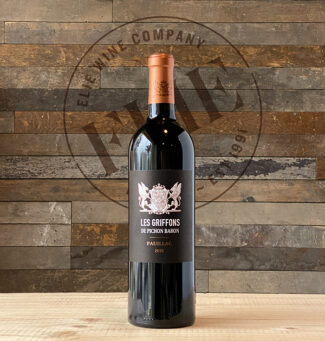 018 Les Griffons de Pichon Baron ($64): The ‘Les Griffons’ label first appeared in 2012, intended to be the estate’s higher-end second wine. The original, Baronet de Pichon, first appeared in 1983, and was renamed ‘Les Tourelles de Longueville’ three years later. Les Griffons is distinct in that it is made from the same old vines used in the Grand Vin, with a higher proportion of Merlot to make it accessible earlier. The 2018 blend contains 52% Cabernet Sauvignon and 48% Merlot, and the average annual production (close to 3000 cases) sees 60% new oak for eighteen months before release. It is quite able to age, but delightful now, with a strong floral character lending aromatics to the juicy, supple and upfront fruit.
018 Les Griffons de Pichon Baron ($64): The ‘Les Griffons’ label first appeared in 2012, intended to be the estate’s higher-end second wine. The original, Baronet de Pichon, first appeared in 1983, and was renamed ‘Les Tourelles de Longueville’ three years later. Les Griffons is distinct in that it is made from the same old vines used in the Grand Vin, with a higher proportion of Merlot to make it accessible earlier. The 2018 blend contains 52% Cabernet Sauvignon and 48% Merlot, and the average annual production (close to 3000 cases) sees 60% new oak for eighteen months before release. It is quite able to age, but delightful now, with a strong floral character lending aromatics to the juicy, supple and upfront fruit.
The Quintessential Pauillac in Two First Growths’ Third Wines
No terroir in the world has been so analyzed over so long a period of time as those of ‘les rois des châteaux’, Pauillac’s Premiers Crus, especially the original two. Every grain of sand, each handful of gravel and ounce of clay in the vineyards of Château Latour and Château Lafite Rothschild has been examined and evaluated, and global warming may even have improved these storied parcels, as Cabernet Sauvignon—the alpha and omega for both estates—ripens better and more reliably as hang-times increases. As a result, the percentage of Merlot in these wines is generally under 10%.
Owners have come and gone, but the earth beneath Latour and Lafite remains sacrosanct.
Such a legacy is not priceless, of course, and the demand for these crus classés gems is tracked with the same interest as the terroir. The wines of Latour and Lafite almost always sell above market price and current vintage futures, purchased long before the wine is even bottled, won’t ship for years.
Second wines from these châteaux are increasingly sought after, and Carruades de Lafite, with 20,000 cases produced, sells for hundreds of dollars rather than thousands, with the larger percentage of Merlot softening the approach. Likewise, Latour’s ‘Les Forts de Latour’, typically 70% Cabernet Sauvignon and 30% Merlot, has an average annual production of 11,000 cases and comes from the edges of the famous ‘Enclos’ vineyard used in the Grand Vin. In both cases, the second wines from these top châteaux uses a smaller proportion of new barrels (50 to 60%) in the maturing stage.
As the selection process for first and second wines has grown more rigorous, Latour and Lafite have opted to add yet another annual sorting to the schedule and bottle a third cuvée rather than selling off all the remaining fruit to négociants for branded wines. In general, third wines are the inevitable result of a quest for higher quality standards in second wines and may originate in additional plots purchased by Latour and Lafite over the years or from younger vines not yet capable of producing superior, world class wine. These wines, nonetheless, represent phenomenal values, and are touched by the hands of the same masters who create the Grand Vins.

‘A Time for Sharing’
Château Latour:
Latour’s Grand Vin label is synonymous with its prime terroir, ‘L’Enclos’—a hundred sixteen walled acres studded with old vines, a mere thousand feet from the Gironde. The estuary mellows weather extremes while the soil is key to the wine’s legendary complexity; clay gravel in the heart with sandy gravel at the periphery. These deposits, millions of years old, encourage the vines to develop root systems up to ten feet deep, while the rich subsoils that retain rainwater and see the vines through droughts. The opposite problem is solved mechanically, primarily by a drainage system installed in the 19th century. The combination of location and technical know-how permits Latour to turn out exceptional wines even in vintages that are deemed to have been off years.
Latour produces some of the longest-lived wines in the world, requiring a decade or more before they age into their prime and easily capable of outliving the enologists who make them; vintage1865, tasted a century later by estate director Harry Waugh, was found to be in full possession of its original ripe fruit and firm backbone.
 2015 Le Pauillac de Château Latour ($125) For lovers of minutia, the 2015 Le Pauillac contains 54.2% Cabernet Sauvignon, 41.7% Merlot and 4.1% Petit Verdot. Launched in 1973, Latour’s third wine represents about 7% of the estate’s total production, with origins in less prestigious parcels of land owned by Latour throughout Pauillac, and from the youngest vines whose grapes do not meet the selection criterion for the second wine. Open-knit and luscious, the 2015 shows generous black fruit, rose petals, hints of licorice and tobacco along with a snaking undercurrent of minerality.
2015 Le Pauillac de Château Latour ($125) For lovers of minutia, the 2015 Le Pauillac contains 54.2% Cabernet Sauvignon, 41.7% Merlot and 4.1% Petit Verdot. Launched in 1973, Latour’s third wine represents about 7% of the estate’s total production, with origins in less prestigious parcels of land owned by Latour throughout Pauillac, and from the youngest vines whose grapes do not meet the selection criterion for the second wine. Open-knit and luscious, the 2015 shows generous black fruit, rose petals, hints of licorice and tobacco along with a snaking undercurrent of minerality.

‘Bordeaux in Our Roots for Generations’
Château Lafite Rothschild:
Baron Éric de Rothschild, who has managed the acclaimed estate since 1973, does not mince words: “Lafite turns bare earth into heaven.” Indeed, the château is named for its terroir; Lafite translates literally (from old Gascon) to ‘hillock’. Of the nearly three hundred acres that make up Lafite, the most highly prized vines are planted on the elevated ground near the château, with additional acres on the Carruades plateau to the west and a few in neighboring Saint Estèphe. All are well-drained and consist of fine deep gravel mixed with aeolian sand with subsoils of tertiary limestone. Vines average around forty years of age, although none younger than ten years old are used for the Grand Vin, and vines older than eighty are generally replaced. That said, the oldest plot, ‘La Gravière’, was planted in 1886.
Clearly, Lafite Rothschild possesses almost mystical cachet; it is among the most collectible wines in the world and is the signet wine in nearly every major cellar. Although Lafite’s second wine is named for its parcels on the Carruades plateau, those vines are almost always end up in the Grand Vin, and even the Saint Estèphe plots are permitted in the blend. In 1995, Domaines Barons de Rothschild released the first ‘Légende’ collection, affordable wines from various Bordeaux appellations. Crafted by Lafite winemaker Diane Flamand, Légende wines have proven reliable bargains even as the price for the prestigious Grand Vin slips further out of reach of most consumers.
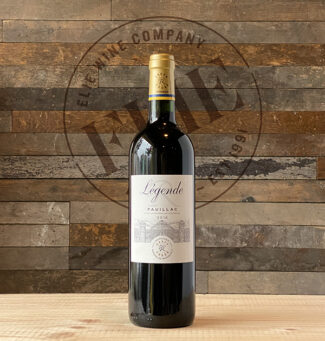 2016 Château Lafite Rothschild ‘Légende R’ Pauillac ($50) The cuvée is 75% Cabernet Sauvignon and 25% Merlot, and is vinified in the same cellar as the Grand Vin, using the same circumspection. ‘Légende R’ is matured for 12 months (60% on new oak) before release. It is robust and elegant with a bouquet of tobacco, orange peel, pencil lead and cinnamon followed by the Pauillac signature, blackberry and cranberry tastes, along with notes of tobacco, pencil shavings, orange peel and earth. 5000 cases were produced.
2016 Château Lafite Rothschild ‘Légende R’ Pauillac ($50) The cuvée is 75% Cabernet Sauvignon and 25% Merlot, and is vinified in the same cellar as the Grand Vin, using the same circumspection. ‘Légende R’ is matured for 12 months (60% on new oak) before release. It is robust and elegant with a bouquet of tobacco, orange peel, pencil lead and cinnamon followed by the Pauillac signature, blackberry and cranberry tastes, along with notes of tobacco, pencil shavings, orange peel and earth. 5000 cases were produced.
Pauillac Vintage Report
|
|
|
|
|
|
- - -
Posted on 2021.12.08 in Pauillac, France, Bordeaux, Wine-Aid Packages | Read more...
Featured Wines
- Notebook: A’Boudt Town
- Saturday Sips Wines
- Saturday Sips Review Club
- The Champagne Society
- Wine-Aid Packages
Wine Regions
Grape Varieties
Aglianico, Albarino, Albarín Tinto, Alicante Bouschet, Aligote, Altesse, Arbanne, Arcos, Auxerrois, Barbarossa, Beaune, Biancu Gentile, Bonarda, bourboulenc, Cabernet Sauvignon, Calvi, Carcajolu-Neru, Chenin Blanc, Cinsault, Clairette, Cortese, Corvinone, Cot, Counoise, Dolcetto, Erbamat, Fiano, folle Blanche, Fumin, Gamay, Garganega, Garnacha Tintorera, Godello, Graciano, Grenache, Grenache Blanc, Grolleau, Groppello, Jacquère, Juan Garcia, Lladoner Pelut, Macabeo, Maconnais, Malbec, Malvasia, manseng, Marcelan, Marsanne, Marselan, Marzemino, Melon de Bourgogne, Mencía, Merlot, Montepulciano, Montònega, Moscatell, Mourv, Mourvèdre, Muscadelle, Muscat, Natural, Nebbiolo, Nero d'Avola, Niellucciu, Palomino, Parellada, Patrimonio, Pecorino, Pedro Ximénez, Persan, Petit Meslier, Pineau d'Aunis, Pinot Auxerrois, Pinot Blanc, Pinot Gris, Pinot Meunier, Pinot Noir, Pouilly Fuisse, Pouilly Loche, Riesling, Rousanne, Sagrantino, Sangiovese, Sauvignon, Sciacarellu, Semillon, Serine, Sumoll, Tempranillo, Teroldego, Timorasso, Trebbiano Valtenesi, Treixadura, trepat, Trousseau, Ugni Blanc, Vermentino, Viognier, Viura, Xarel-loWines & Events by Date
- September 2025
- August 2025
- July 2025
- June 2025
- May 2025
- April 2025
- March 2025
- February 2025
- January 2025
- December 2024
- November 2024
- October 2024
- September 2024
- August 2024
- July 2024
- June 2024
- May 2024
- April 2024
- March 2024
- February 2024
- January 2024
- December 2023
- November 2023
- October 2023
- September 2023
- August 2023
- July 2023
- June 2023
- May 2023
- April 2023
- March 2023
- February 2023
- January 2023
- December 2022
- November 2022
- October 2022
- September 2022
- August 2022
- July 2022
- June 2022
- May 2022
- April 2022
- March 2022
- February 2022
- January 2022
- December 2021
- November 2021
- October 2021
- September 2021
- August 2021
- July 2021
- June 2021
- May 2021
- April 2021
- March 2021
- February 2021
- January 2021
- December 2020
- November 2020
- October 2020
- September 2020
- August 2020
- July 2020
- June 2020
- May 2020
- April 2020
- March 2020
- February 2020
- January 2020
- December 2019
- November 2019
- October 2019
- September 2019
- August 2019
- July 2019
- June 2019
- May 2019
- April 2019
- March 2019
- February 2019
- January 2019
- December 2018
- November 2018
- October 2018
- September 2018
- August 2018
- July 2018
- June 2018
- May 2018
- April 2018
- March 2018
- February 2018
- January 2018
- December 2017
- November 2017
- October 2017
- September 2017
- August 2017
- July 2017
- June 2017
- May 2017
- April 2017
- March 2017
- February 2017
- January 2017
- December 2016
- November 2016
- October 2016
- September 2016
- August 2016
- July 2016
- June 2016
- May 2016
- April 2016
- March 2016
- February 2016
- January 2016
- December 2015
- November 2015
- October 2015
- September 2015
- August 2015
- July 2015
- June 2015
- May 2015
- April 2015
- March 2015
- February 2015
- January 2015
- December 2014
- November 2014
- October 2014
- September 2014
- August 2014
- July 2014
- June 2014
- April 2014
- March 2014
- February 2014
- January 2014
- December 2013
- November 2013
- October 2013
- September 2013
- August 2013
- July 2013
- June 2013
- May 2013
- April 2013
- March 2013
- February 2013
- January 2013
- December 2012
- November 2012
- October 2012

